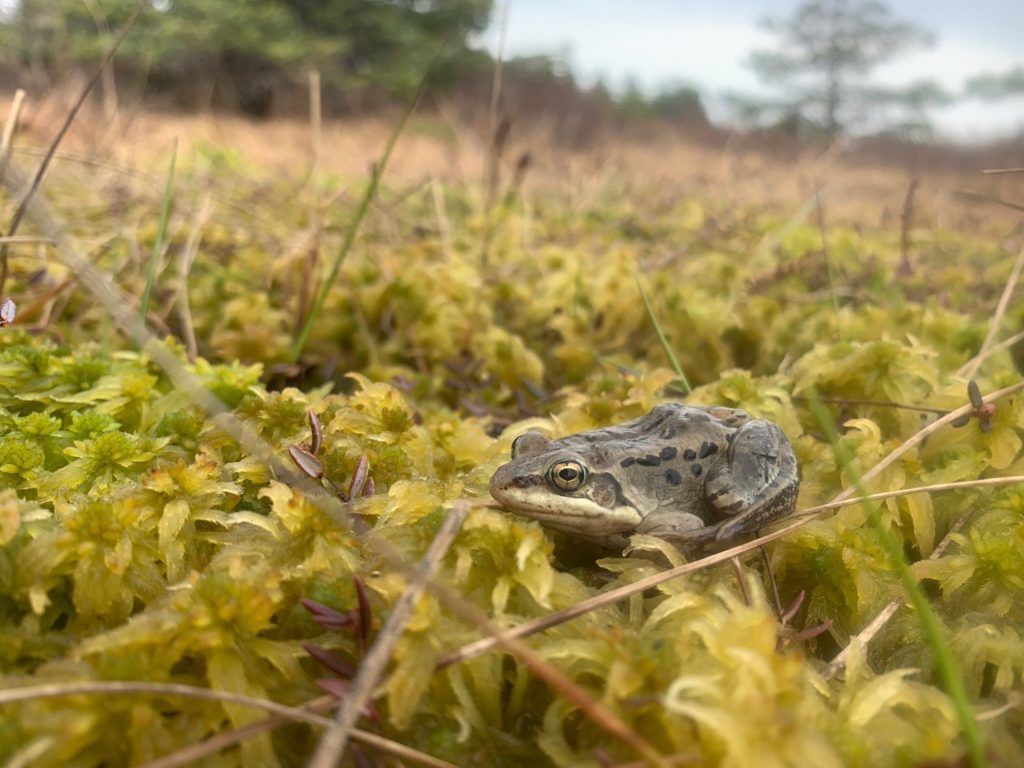
Frogs and salamanders in the Chugach and Tongass national forests are being targeted by a microscopic fungus that settles on their skin, impeding their ability to absorb water and oxygen.
Unlike the fungi foraged during Cordova’s annual Fungus Festival, this fungus can be a killer for many frogs and salamanders, which are an important part of these national forest ecosystems.
The amphibian chytrid fungus, also called Batrachochytrium dendrobatidis, or Bd, thought to be originally from Asia, was first discovered in Alaska in 2000. Bd has since been found in 11 of 13 sites on the Chugach’s Cordova District, as well as multiple locations in Southeast Alaska, including the Haines and Skagway areas, on Prince of Wales Island, but not on Admiralty or Douglas Islands.
U.S. Forest Service biologists for the Alaska Region said this past week that they are working with their forest and interagency partners to spearhead development of an amphibian disease working group to track the fungus.
How it got to Alaska is still uncertain, but one thing researchers are sure of: people had a role in transporting Bd to Alaska and elsewhere around the globe, including Australia, Central America and South America.
The most likely suspect is the live amphibian pet trade, said Brand Phillips, Region 10 wildlife and threatened and endangered species program leader with the U.S. Forest Service Alaska Region. Scientists have urged lawmakers to write laws restricting such trade or to put more quarantines on amphibians, but the live pet industry has a powerful lobby which has fought these efforts, he said. The pet trade has, in fact, been linked to the spread of infectious fungal diseases in amphibians, which have undergone severe population declines all over the world, due also to habitat destruction, climate change and invasive species.
Part of the problem is that people may release pet amphibians they no longer want into the wild, unaware that those unwanted pets may have the fungus or may be prone to attract it.
“You can’t see it [Bd],” said Phillips. “It is microscopic. When the spores get into frogs and salamanders it attacks the keratin in the skin, causing ulcers and hardening of the skin. What kills them is they have a heart attack because when it affects their skin it impairs their ability to absorb oxygen and water, leading to their death.”
“We’re pretty sure humans had a role in spreading it,” said Blake Hossack, a research zoologist with the U.S. Geological Survey from Missoula, Montana, who has sampled frogs across the Tongass as part of a USGS team to determine the prevalence of Bd in frogs. “We didn’t even know about the fungus until 1998.”
Hossack agreed that the pet industry has been involved in spreading the fungus, beginning in the 20th century. Research shows that no museum specimens of the Bd fungus were found in North America before the 20th century, he said.
The Bd fungus needs a host to travel and is only found in fresh water, rather than salt water. Temperature-wise, Southeast Alaska offers an optimum environmental for Bd, which grows in temperatures from 39-78 degrees Fahrenheit, and optimally at 63-77 degrees.
Once temperatures rise above 77 degrees, growth of the fungus slows, and at 82 degrees growth stops. A temperature of 86 is lethal to the fungus, Phillips said. Temperatures below freezing also will kill Bd, but since frogs and salamanders hibernate in winter, the fungus can survive and grow while they hibernate.
Some 520 species of frogs and salamanders have been infected, but not all amphibians appear to be susceptible, he said. The American bullfrog seems to be immune to Bd, but still can be a carrier, he said.
Alaska’s two national forests host three salamander and three frog species that are native to the Tongass, with two frog species extending their range into the Chugach. Two other frog species have also been accidentally introduced to the Tongass. These native amphibians are a vital component of these forests, consuming a suite of invertebrates and serving as prey for many fish, birds and small carnivores, Forest Service officials said. Frogs are also an important cultural symbol for some Alaska Native tribes and are depicted in their art and stories.
Forest Service researchers said they hope that by educating the public about this fungus and its impact on frogs and salamanders that people will join their effort to protect these critters and their role in these vast natural ecosystems.





